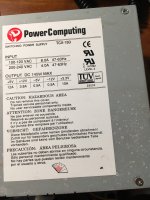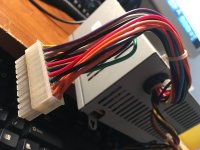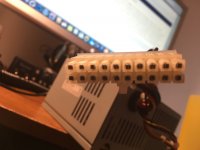CC_333
Well-known member
I'm excited to finally have a new logic board for the thing (my first not-new Mac Acquisition, bought sometime around 2005 or 2006), so that I can actually get it to work for the first time in nearly 9 years (a mouse built a nest in it in 2010 and fried the original board... yuck!)
However, I'm almost certain the PSU is shot by now (I had a hunch it was dead then too, but I couldn't do anything about it), but now I want to try to come up with a replacement, and for that, I just need some information before I can come up with a plan.
So, to that end, does anyone know what the pinout of the stock PSU is? Superficially, it appears to be ATX, but the wiring may be different. If it's as simple as plugging in a standard ATX supply, that would be ideal, but I'm not opposed to rewiring one to fit if I have to.
Or maybe it can simply be recapped?
It's an Alchemy-based machine, if that matters.
Thanks!
c
However, I'm almost certain the PSU is shot by now (I had a hunch it was dead then too, but I couldn't do anything about it), but now I want to try to come up with a replacement, and for that, I just need some information before I can come up with a plan.
So, to that end, does anyone know what the pinout of the stock PSU is? Superficially, it appears to be ATX, but the wiring may be different. If it's as simple as plugging in a standard ATX supply, that would be ideal, but I'm not opposed to rewiring one to fit if I have to.
Or maybe it can simply be recapped?
It's an Alchemy-based machine, if that matters.
Thanks!
c
Last edited by a moderator:




